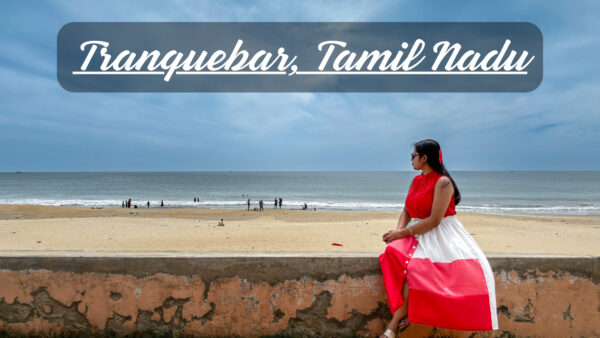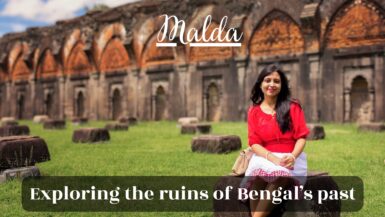Tranquebar is a heady cocktail of tranquil sea and postcard-esque colonial structures. Nestled in the Coromandel coastline of Tamil Nadu, Tranquebar was originally called Tharangambadi. The word ‘Tharangambadi’ is poetic, which literally translates to ‘land of singing waves.’ With the gentle waves of the Bay of Bengal swaying along its coastline, Tharangambadi is truly where the waves sing. Moreover, Tharangambadi was the first Danish colonial possession in India. The Danes were unable to pronounce the word ‘Tharangambadi’ and instead distorted its name to Tranquebar. Along with Serampore in West Bengal, Tranquebar remained a mercurial trading outpost for the Danish empire until their final sale to the British. In the wake, the Danes left an indelible mark on Tharangambadi through a petite fort overlooking the sea and a host of vibrant colonial buildings.
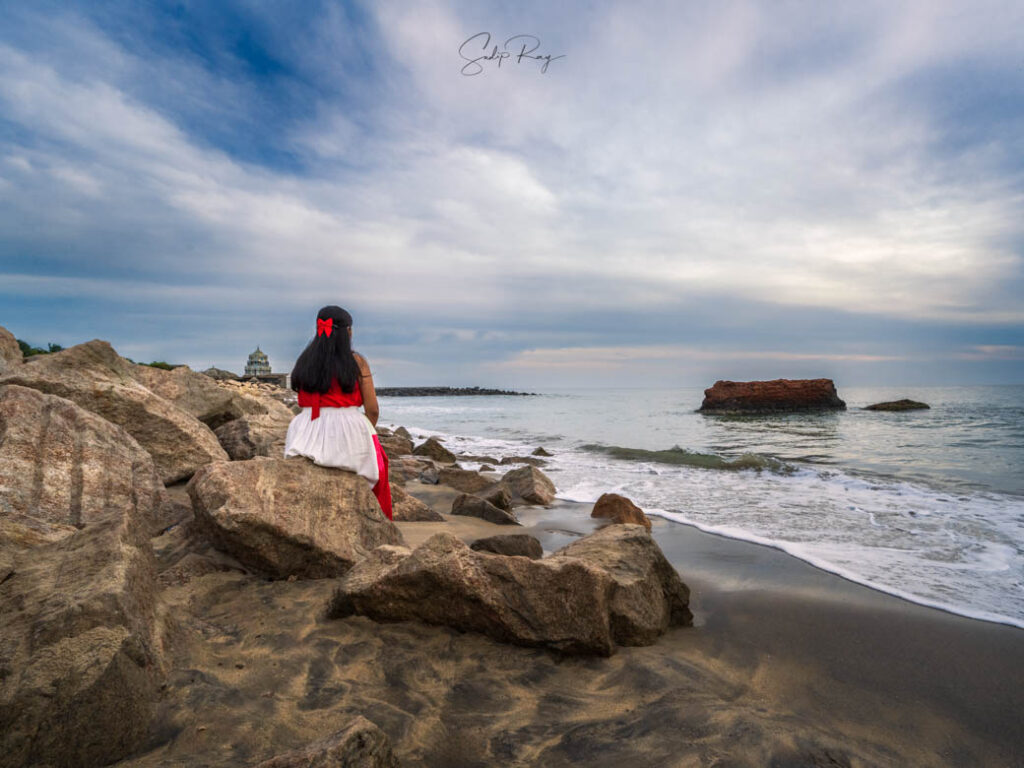
Table of Contents
History of Tranquebar:
Arrival of the Danes:
Like his few European counterparts, the Danish king Christian IV was eager to snatch a piece of pie in the lucrative trade in the East. The command of the naval fleet was handed over to a 26-year-old daring adventurer, Ove Giedde. In 1618, he sailed with a mission to aid the King of Ceylon against the Portuguese in exchange for sole trading rights with Ceylon. However, the journey was perilous. By the time Giedde reached Cape of Good Hope, he had lost 200 of his men due to diseases and pirate attacks. Even so, Giedde managed to reach Ceylon which was already under full Portuguese control. Disheartened, Giedde then struck an unproductive trade treaty with the ruler of Candy and sailed along the Coromandel Coast. By a stroke of luck, he finally anchored off the coast near Tharangambadi.
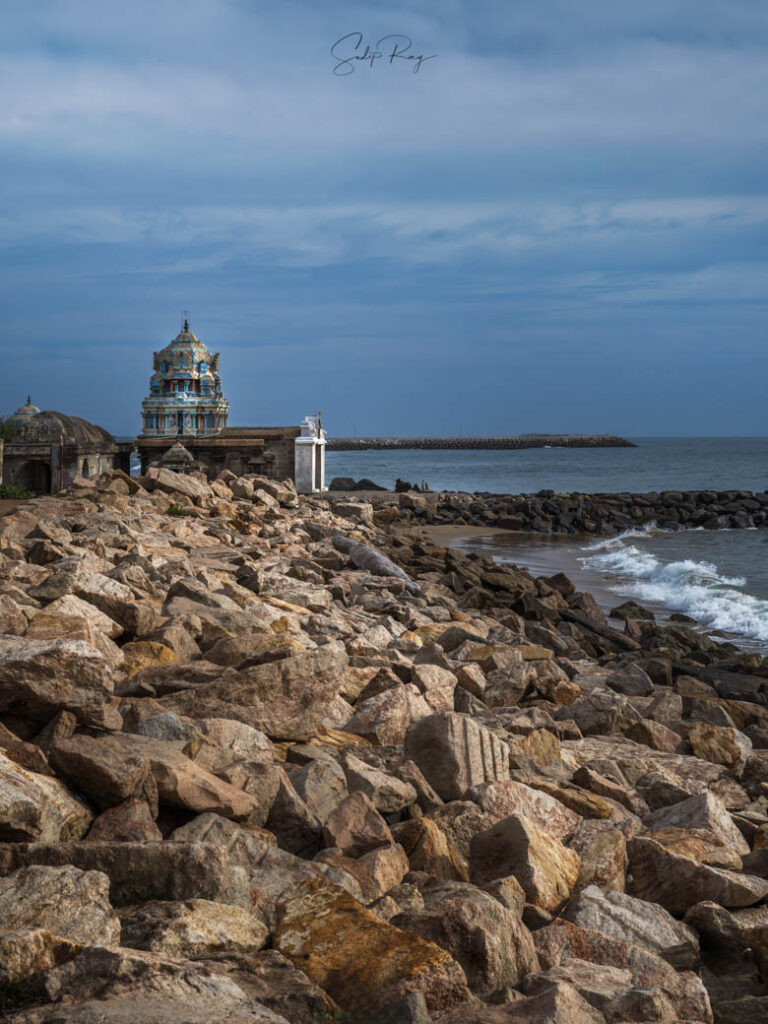
Building a colony:
Giedde spared no time and quickly entered into a treaty with the local ruler, Raghunatha Nayaka of Tanjore in 1620. Land in Tharangambadi was leased to the Danes along with exclusive trading rights in exchange for a tribute of Rs. 3,000 per year. Soon, fortifications were built, and Denmark gained a foothold in India. Gradually, the Danes expanded their territories, and in 1670 they acquired a few more villages. The Danish exports included spices such as pepper, cardamom, cloves, coffee, cotton textiles, and so on.
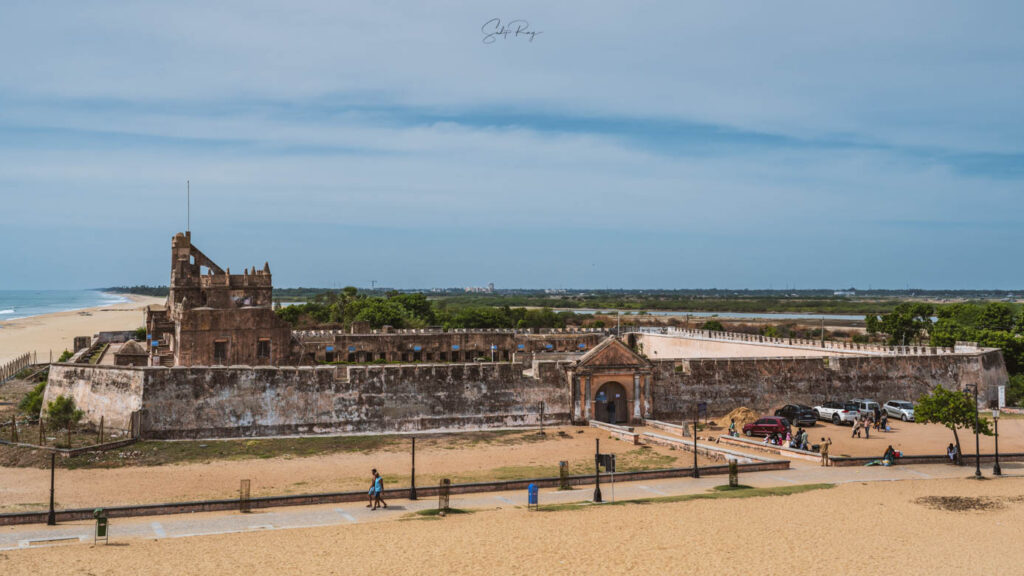
Arrival of the Protestant Missionaries:
In 1705, Bartholomaus Ziegenbalg arrived in Tranquebar to preach Protestant Christianity. A rarity in the colonial era, Ziegenbalg quickly learnt Tamil and adopted the lifestyle of the native Indians. He worked hard for the upliftment of the local people. He even established a printing press in 1712. He himself translated the Bible into Tamil and published it from his humble printing press. It was due to his unprecedented efforts that Protestantism gradually spread to Madras, Cuddalore, and Tanjore.
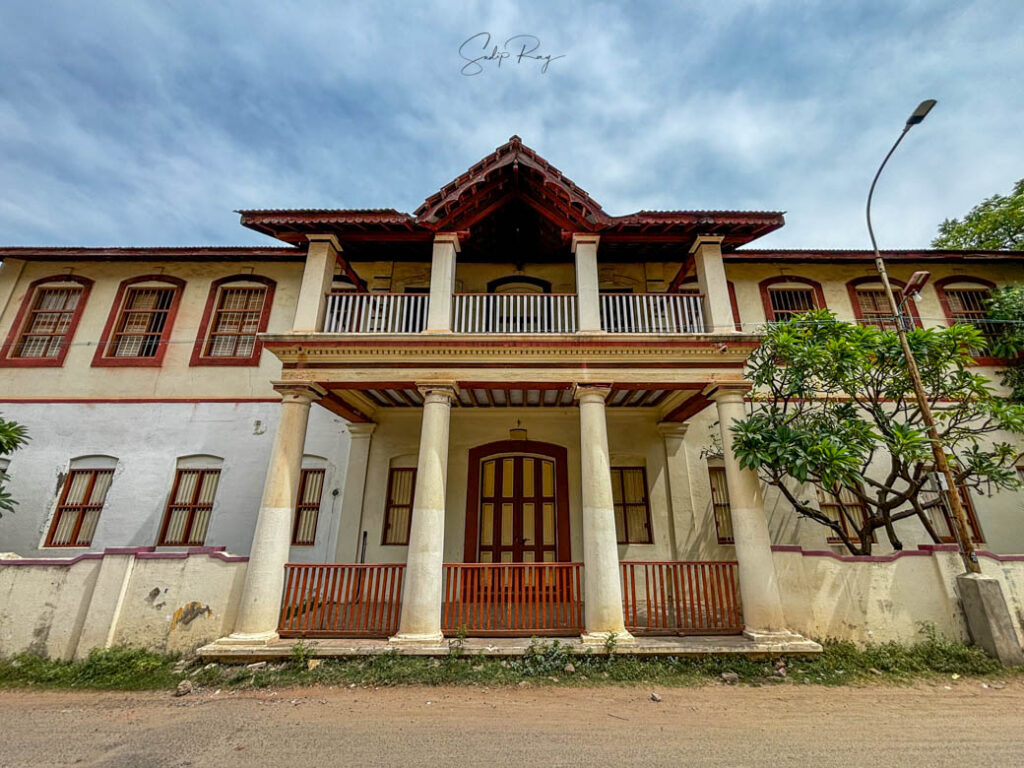
End of the Danish chapter:
Tranquebar, however, was not as profitable as the Danes had expected. Its fortune continued to rise and fall. Ultimately, Denmark sold Tranquebar along with their other trading outpost in Bengal’s Serampore to the British East India Company in 1845. Soon, with the development of railways in Nagapattinam, Tranquebar lost its significance.
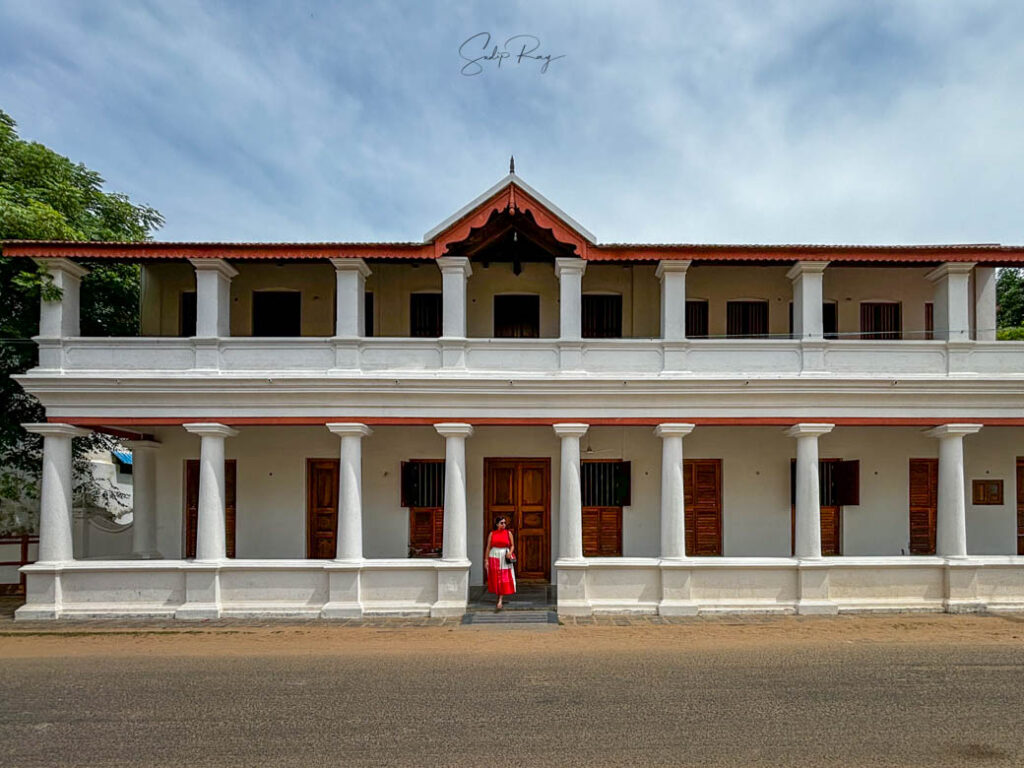
Things to do in Tharangambadi:
Along with the stunning beach, Tranquebar boasts a host of remnants of its colonial past which were built by the Danish colonists. The attractions are located within a small radius and you can easily cover them by foot.
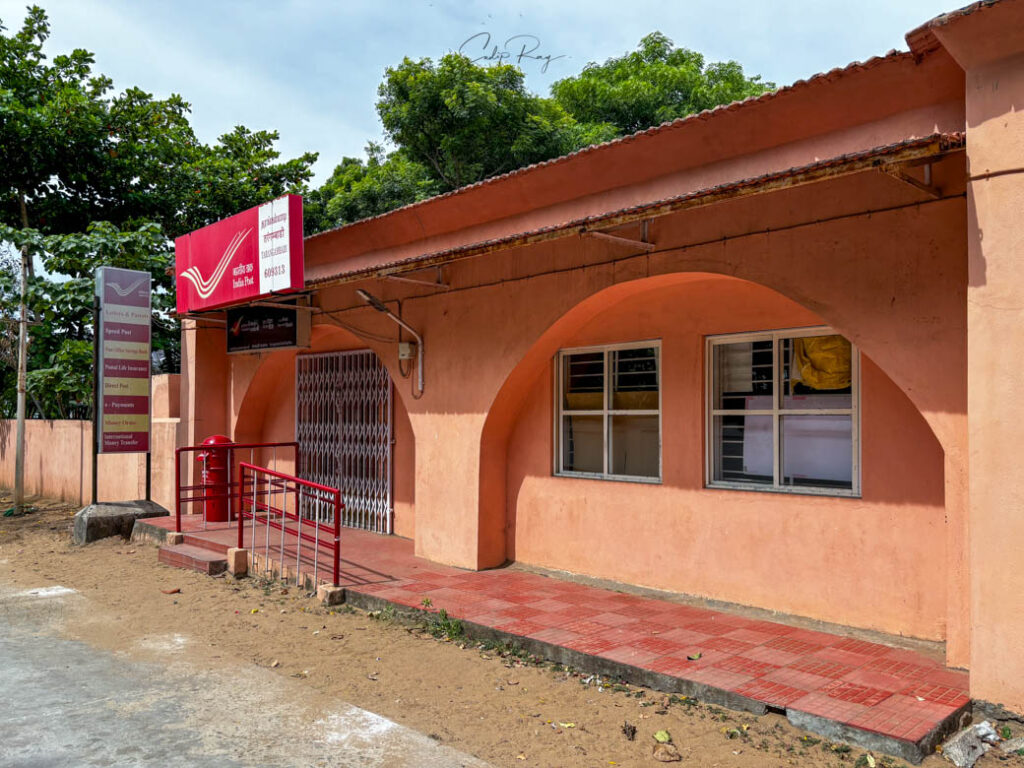
1. The Gateway to Tranquebar:
The arched gateway was once the main entry point to Tranquebar. It marks the start of the King’s Street. At its top, ‘Anno 1792’ is inscribed, which implies that the gate was constructed in 1792.
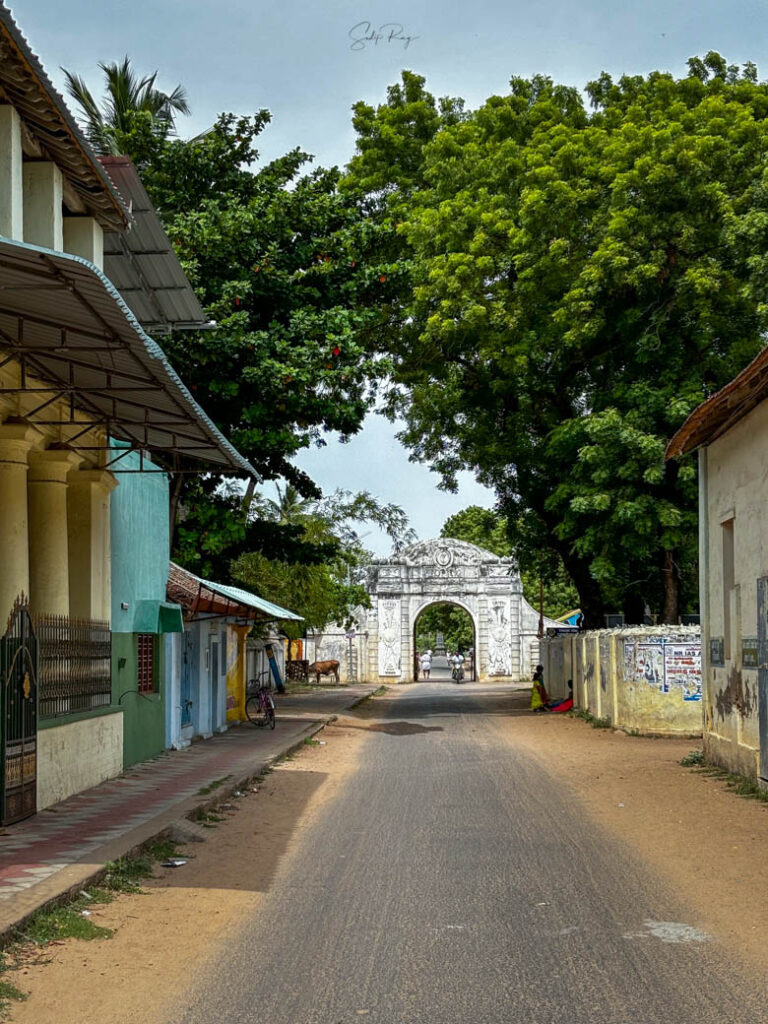
Also, available records say that this present gate was built to replace an old one destroyed in 1792.
2. New Jerusalem Church:
As you set your feet on King’s Street, you will be amazed by the colonial-styled houses and mansions lining the street. The vibe will definitely remind you of Pondicherry’s White Town and Goa’s Fontainhas. It eventually leads to the beach of Tranquebar.
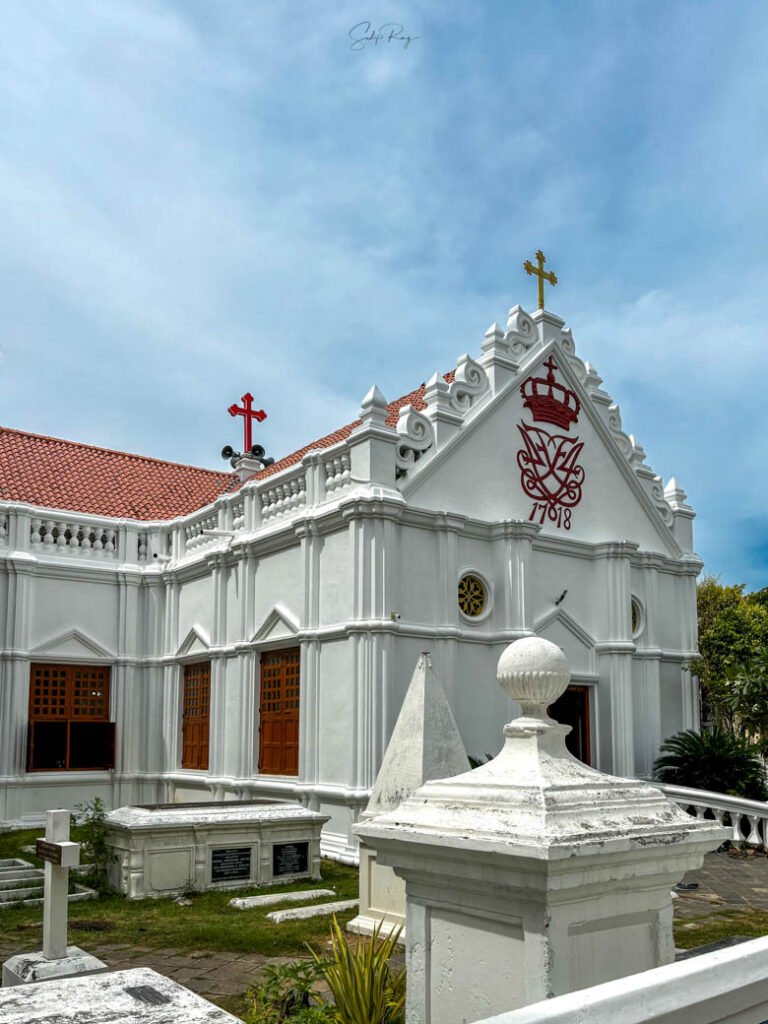
The New Jerusalem Church is located near the huge Gateway. It was built in 1718 by Bartholomaus Ziegenbalg to replace the existing Zion Church in order to accommodate the growing number of Christian devotees. Ziegenbalg himself is buried here.
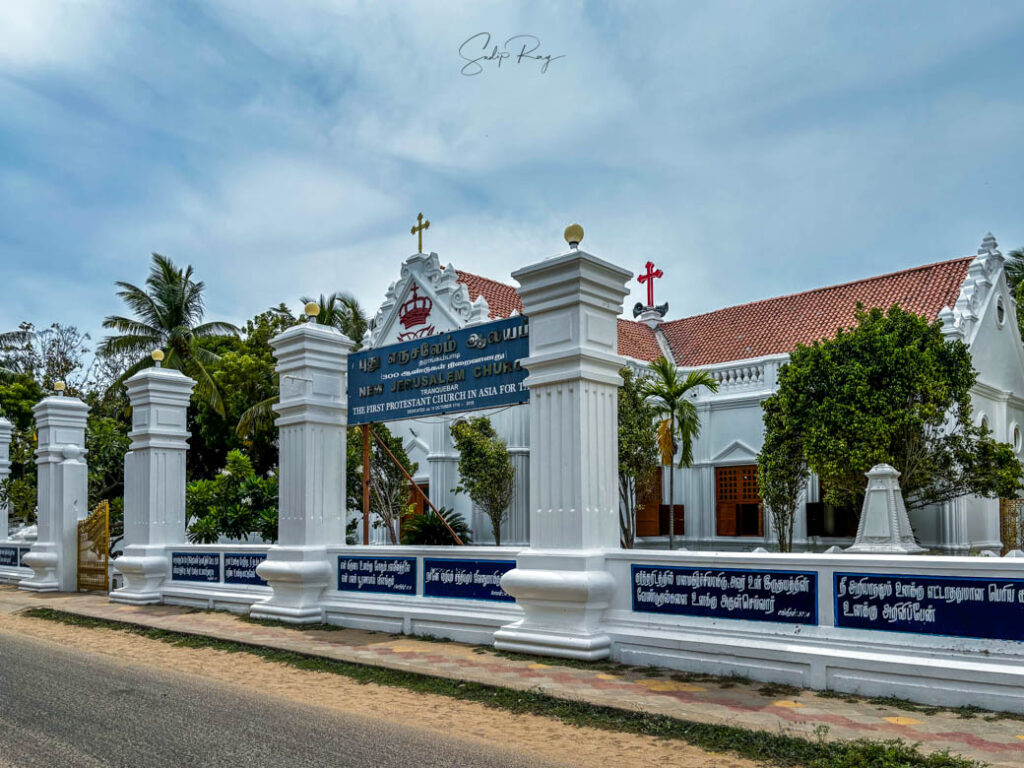
3. Zion Church:
The Zion Church is located at the juncture of King’s Street and Queen’s Street.
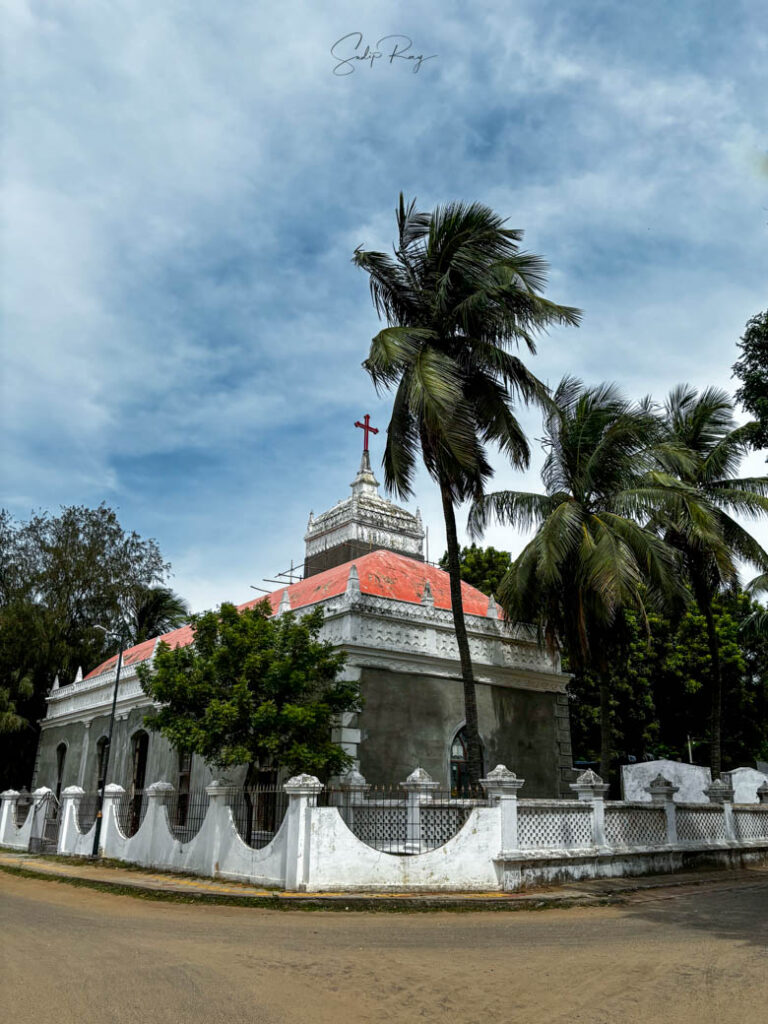
It dates back to 1701. It is not only the oldest church of Tranquebar but also the oldest Protestant church in India.
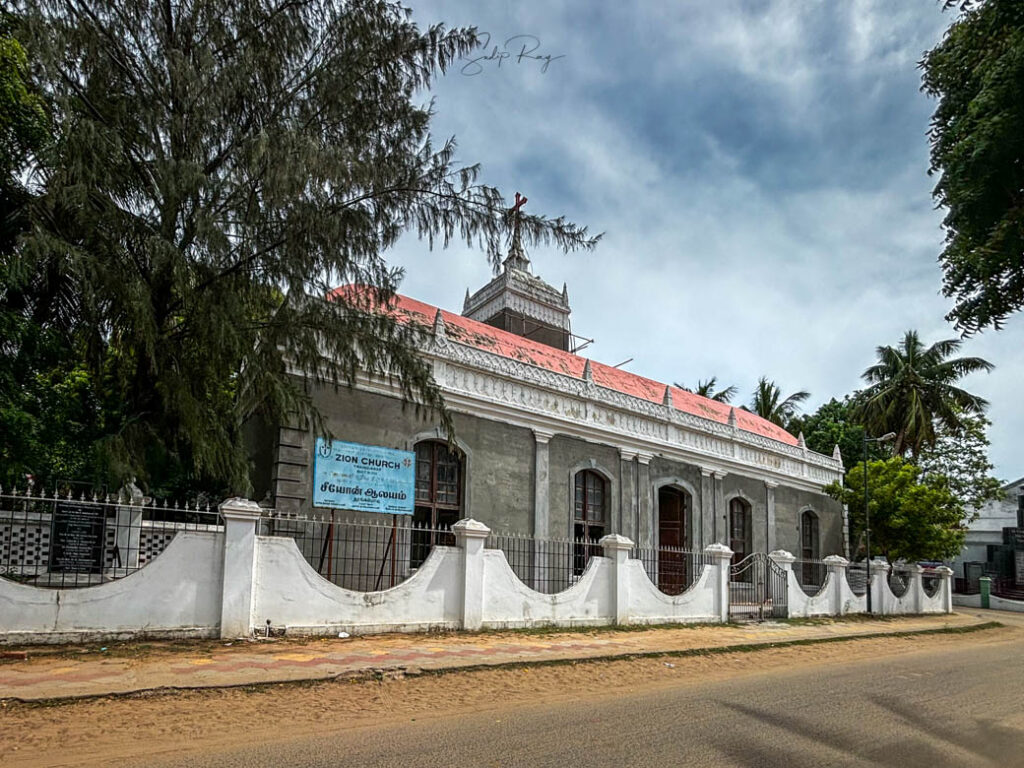
4. Bartholomaus Ziegenbalg Memorial:
At the crossing of the King’s Street and Queen’s Street, a memorial has been dedicated to Bartholomaus Ziegenbalg as part of the tercentenary celebration of the Danish Mission at Tranquebar.
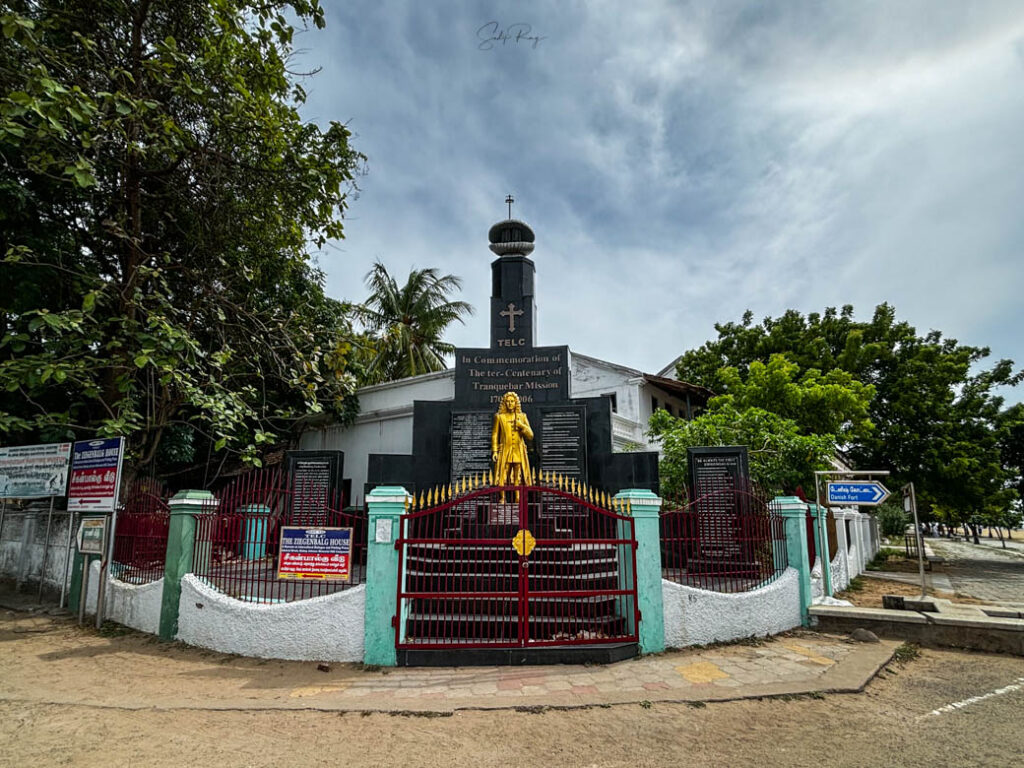
5. The Dansborg Fort:
The Danish Fort is one of the main highlights of Tranquebar. It is quite small and rather unimpressive by general standards, with only two stories and battered by the constant onslaught of waves and winds.
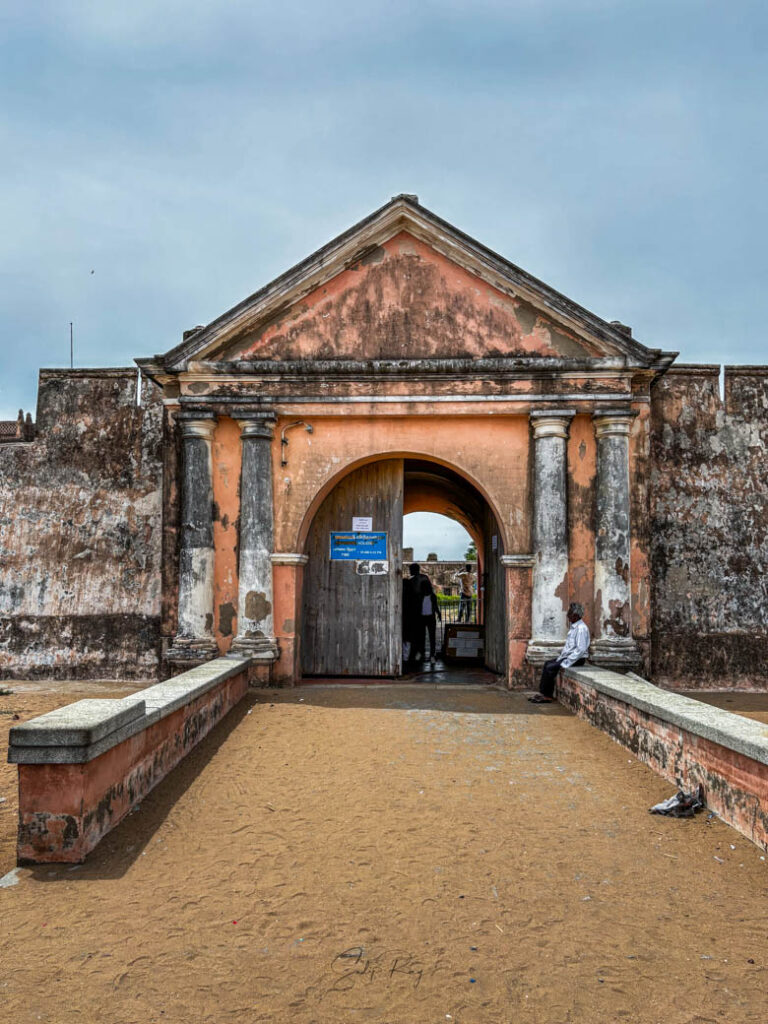
However, in its heyday, the Dansborg was the second-largest Danish fort in the world (after Kronborg in Denmark’s Helsingor). It is also regarded as the most important landmark of Danish history in India.
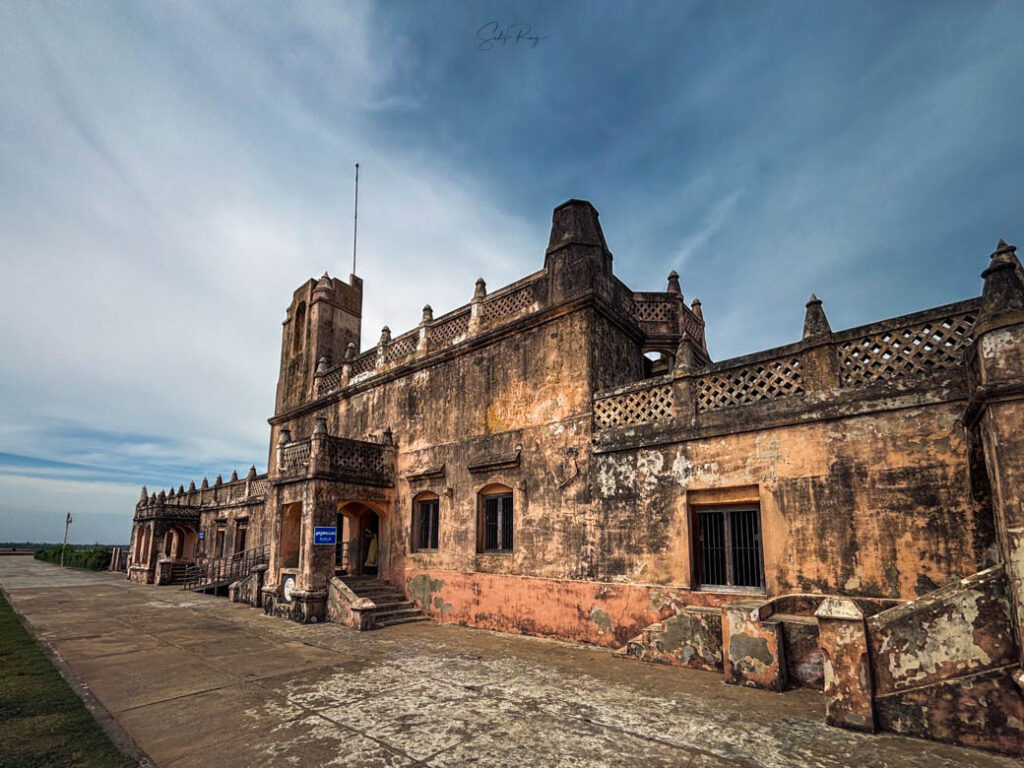
The trapezoidal Dansborg was constructed in Scandinavian fashion. A manicured lawn welcomes visitors who enter through the main northern doorway. The lower storey was used as soldiers’ barrack, kitchen, storeroom, and the likes. The upper floor housed the officers’ rooms, offices, and a small chapel.
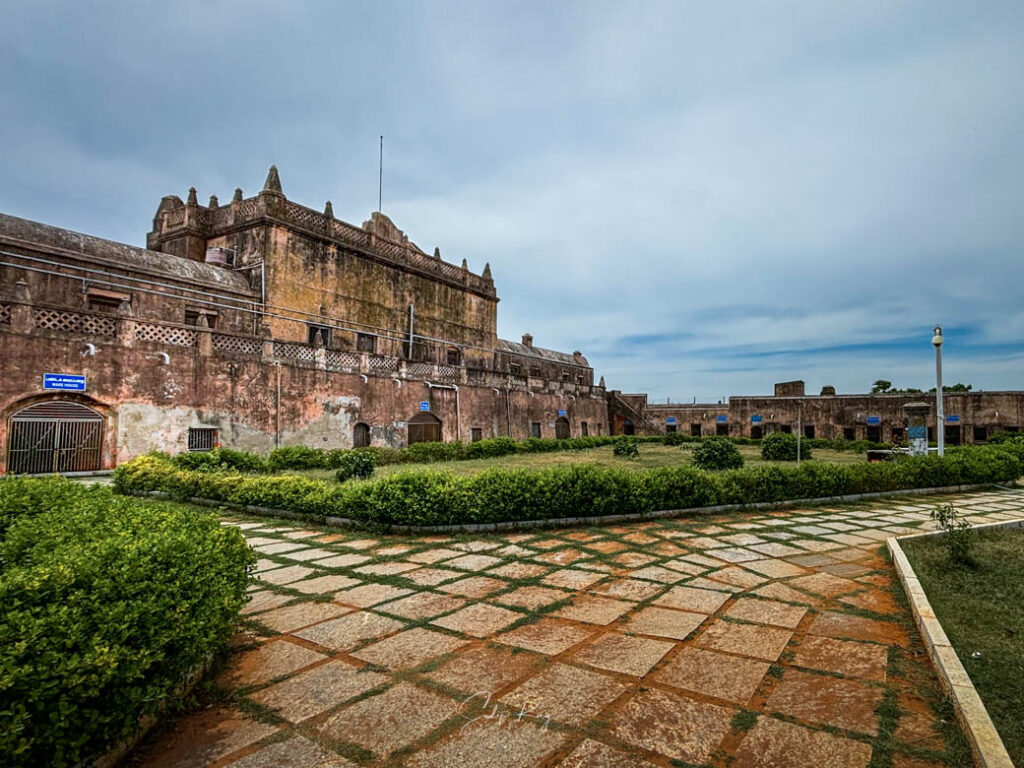
6. Museum inside the Dansborg:
The erstwhile barrack area has now been converted into a tiny museum showcasing the Danish past of Tranquebar.
It displays a few interesting artefacts such as copies of the agreement between the Nayaka king and the Danes as well as the Anglo-Dane sale deed, artefacts used by the Dane residents, models of ships, sculptures of Hindu deities, and so on.
7. Governor’s Bungalow:
This striking yellow-hued building lies just opposite of the Dansborg Fort. It was built around 1780 and served as the residence of the Danish Governor. The nicely renovated bungalow, however, remains mostly under lock and key.
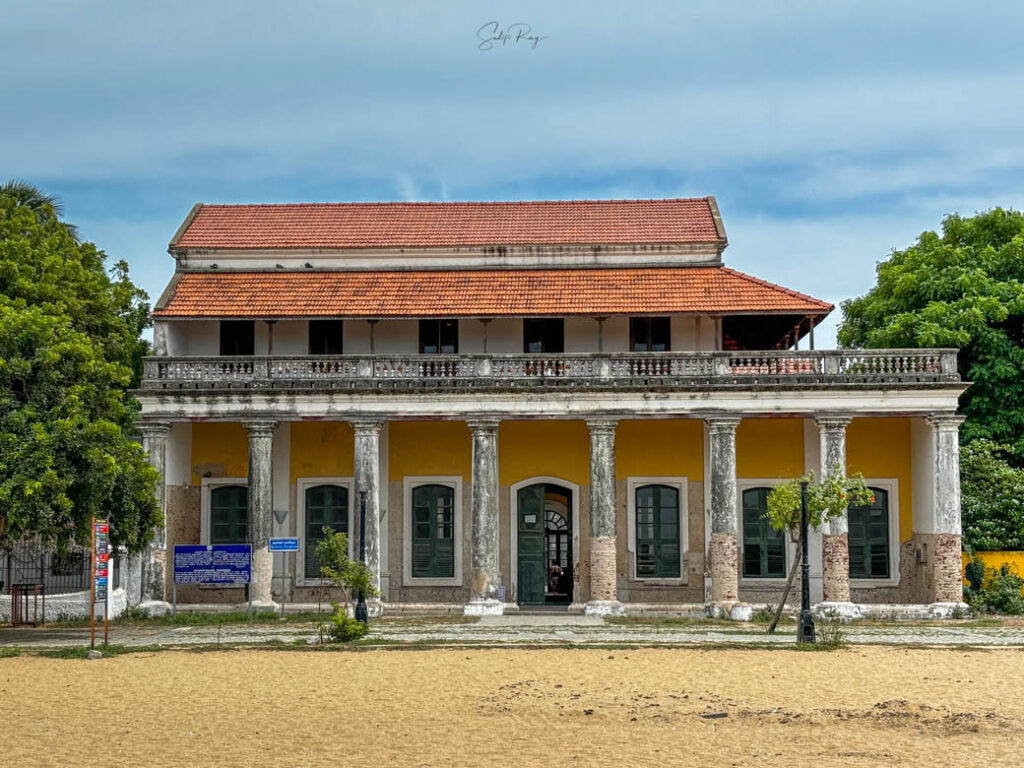
8. Tranquebar Maritime Museum/Danish-Indian Cultural Centre:
Once the Danish Commander’s living quarters, the Tranquebar Maritime Museum was established under the aegis of The Danish Tranquebar Association. The museum houses an impressive collection of books and artefacts collected by Danish ships and also displays the livelihood of local fishermen and personal accounts of local residents who tremendously suffered from the 2004 Tsunami.
9. Sri Masilamani Nathar Temple:
Situated just 300 metres from the Dansborg Fort, this Siva temple was constructed by the Pandyan king Maravarmana Kulasekhara Pandya. The original 700-year-old temple lies close to the sea and is vulnerable to natural calamities. Hence, a newer version of the temple was built and consecrated recently.
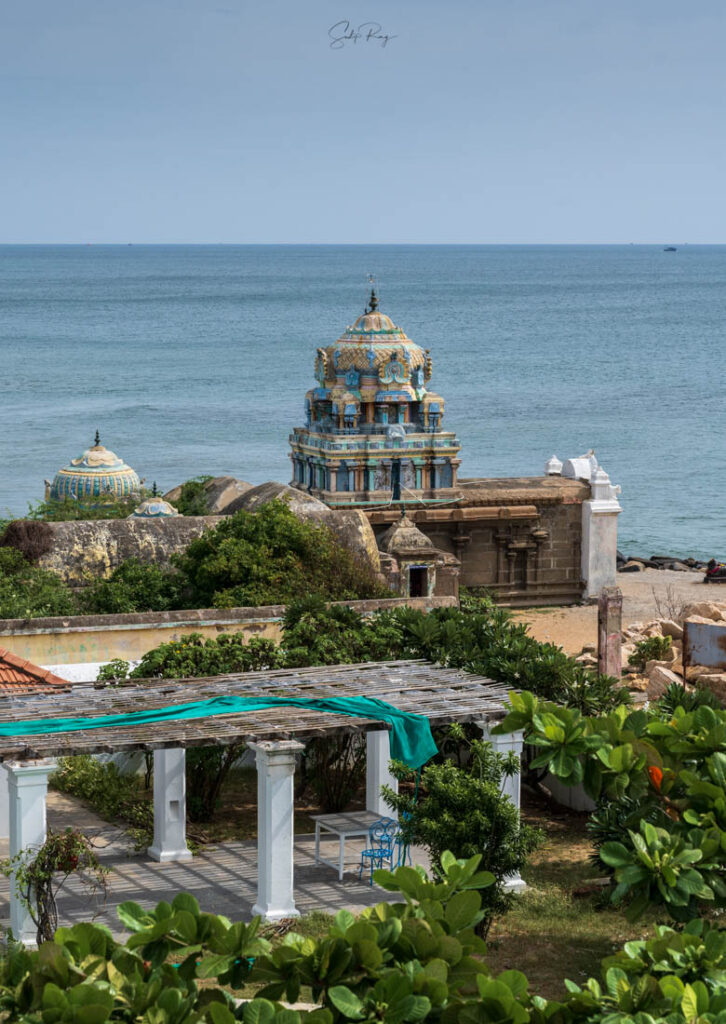
10. Tranquebar Mission Landing Plaque:
This memorial plaque was established in 1906 to commemorate the arrival of the Danish Mission under Ziegenbalg along with Heinrich Plutschau.
11. Ziegenbalg Press:
One of the significant spots of Tranquebar, it was established by Ziegenbalg. The Bible was printed for the first time in Tamil here. Inside, the printing press and the handwritten Tamil Bible by Ziegenbalg are displayed. Sadly, the building was closed when we visited.
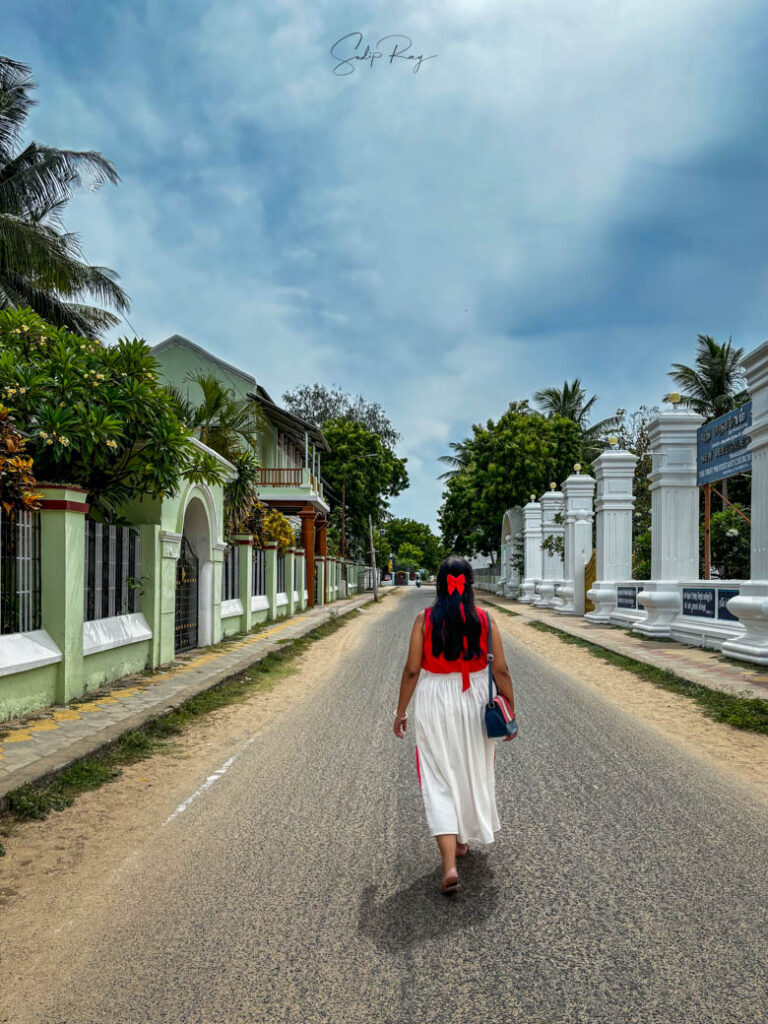
12. Ziegenbalg Museum Complex:
The building was believed to be the house of Ziegenbalg himself. It has been renovated by INTACH and converted into a museum, showcasing the life events of Ziegenbalg as well as the articles he used. However, we couldn’t visit as this was again closed.
13. Tranquebar Beach:
The beach in Tranquebar is one of the world’s most ozone-rich beaches. Serene with blue waters of the Bay of Bengal crashing on the shore, this is counted among Tamil Nadu’s best beaches.
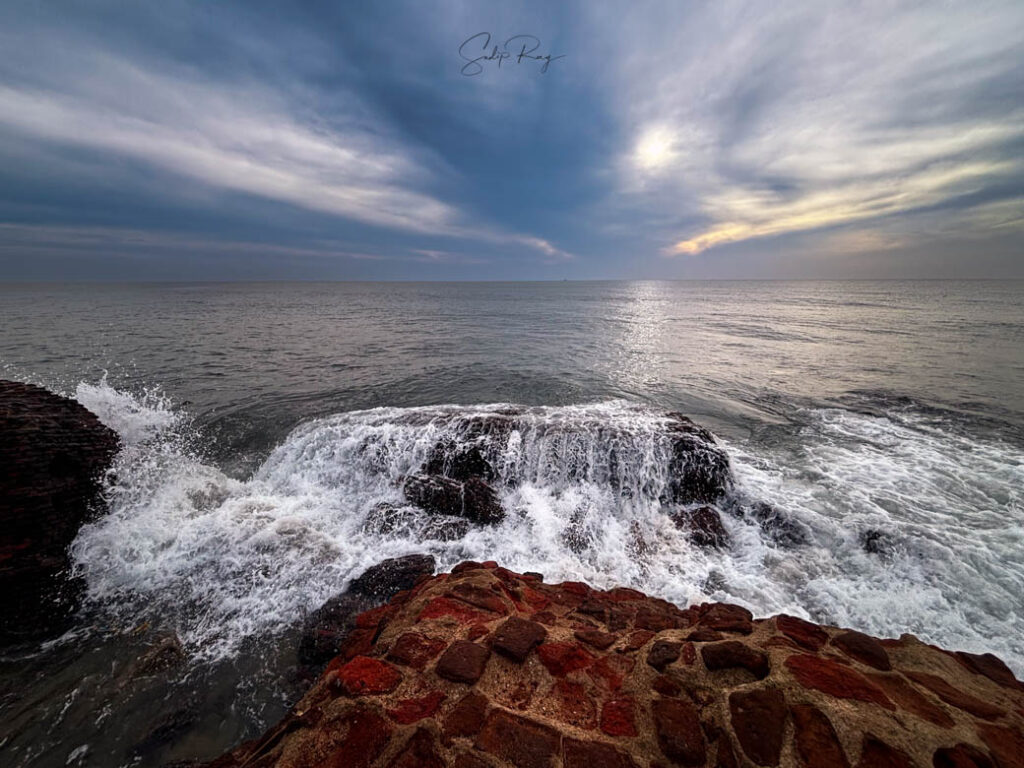
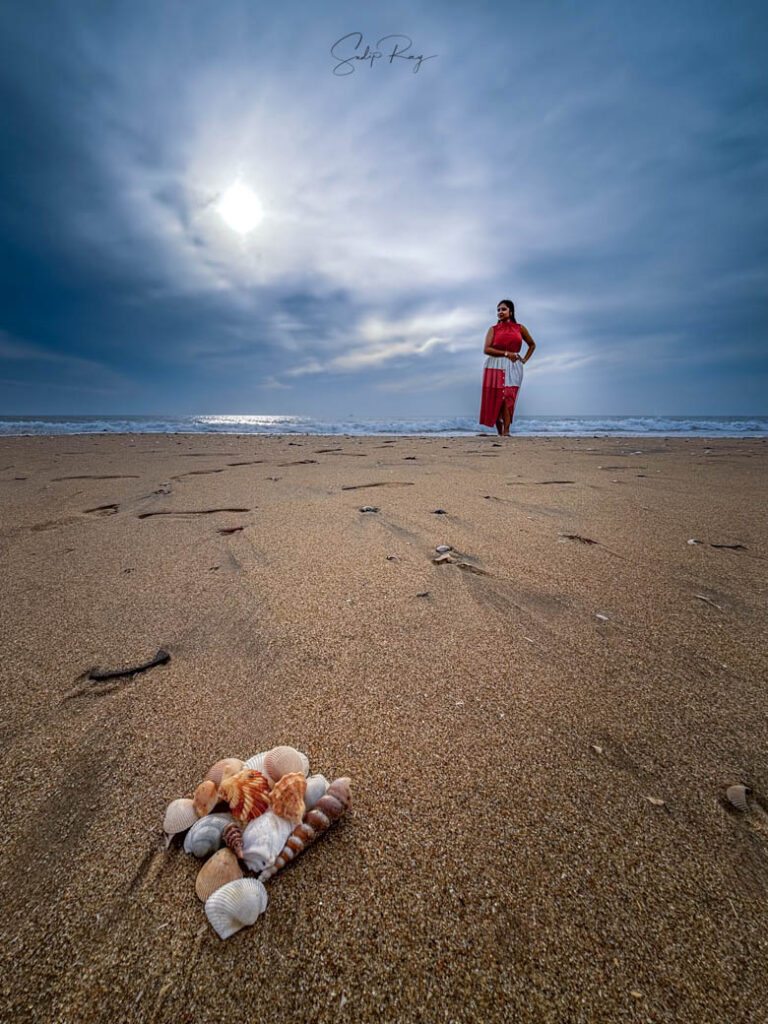
Important FAQs:
1. Where is Tranquebar located?
Tranquebar is a coastal village, located in the Mayiladathurai district of Tamil Nadu. Nestled in the Coromandel Coast, Tranquebar is 267 km from Chennai, 116 km from Pondicherry, 52 km from Chidambaram, 97 km from Thanjavur and 178 km from Tiruchirapalli.
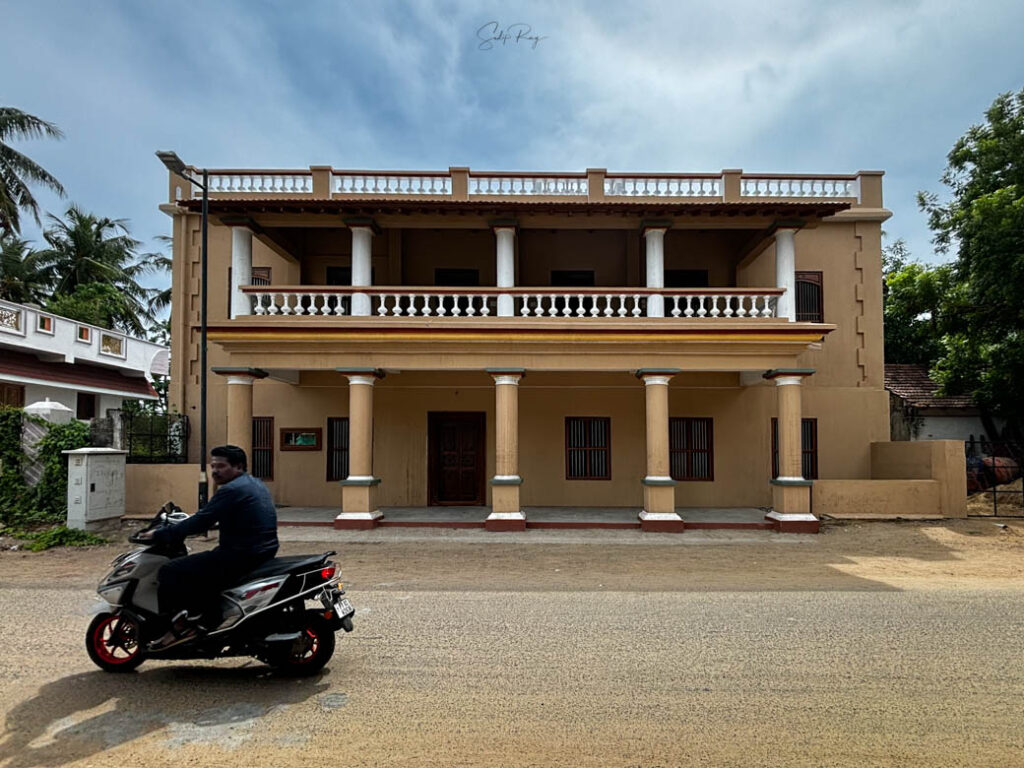
2. How can I reach Tranquebar?
By railways: Mayiladuthurai is the nearest railway station, situated 30 km from Tranquebar. From Chennai, you can take 22675 Cholan Express, 20605 Chennai Egmore Express, and 22614 Shraddha Sethu Express to reach Mayiladuthurai.
By airways: Tiruchirapalli is the nearest airport. However, Chennai is the more well-connected airport. So, it’s better to fly into Chennai, and then take a train, or bus, or hire a cab to reach Tranquebar.
By road: Daily TNSTC buses from Ashok Pillar bus stand of Chennai are available for travelling to Tharangambadi. You can also hire a cab for a more comfortable journey.
As for us, we went to Tranquebar from Thanjavur via Darasuram in a hired cab.
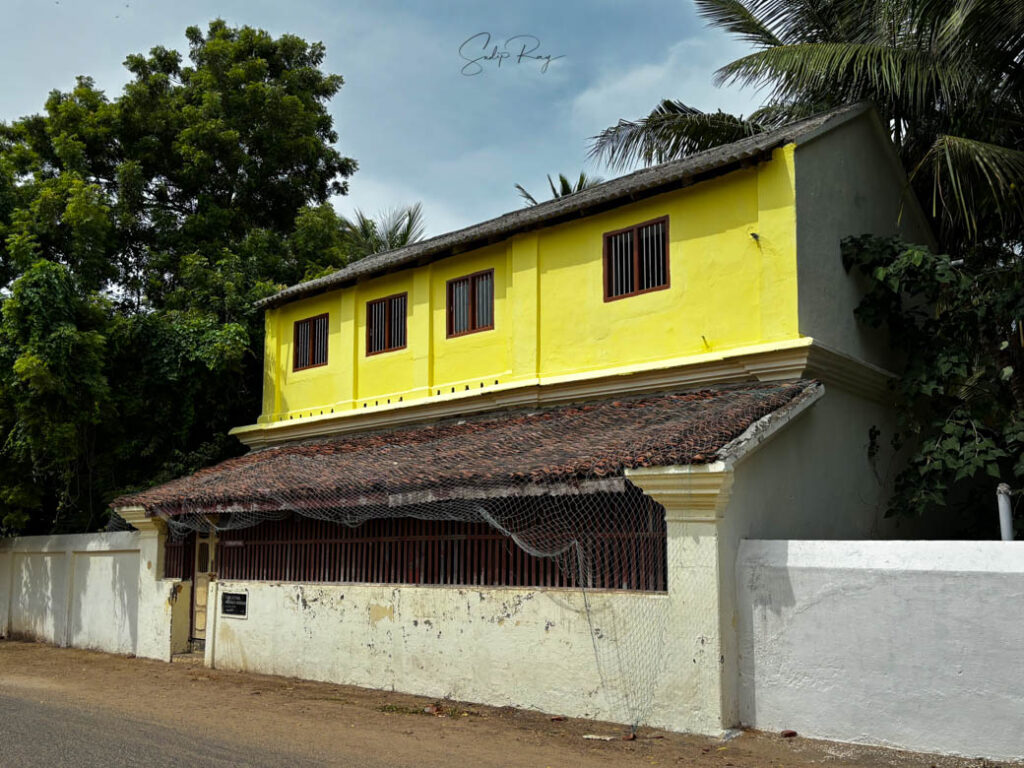
3. Where to stay in Tranquebar?
Despite being a beach destination, Tranquebar does not have any decent hotels. The only option of accommodation here is Neemrana’s Bungalow on the Beach, a Danish-era house renovated into a luxurious heritage hotel.
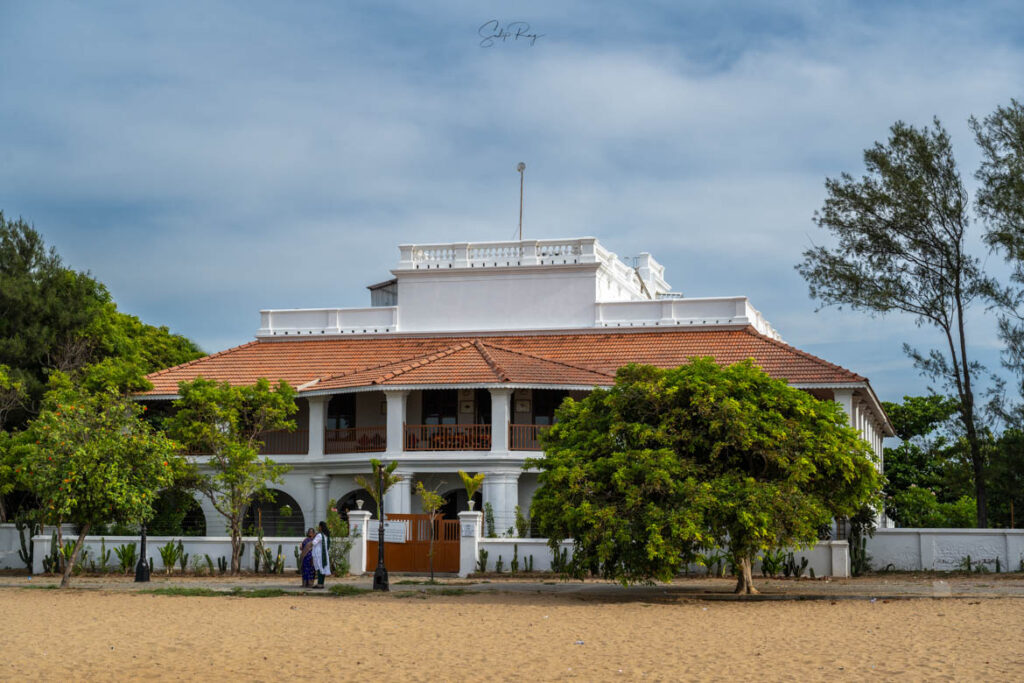
4. Where to eat in Tranquebar?
Except for a few roadside shacks selling tea and munchies near the Dansborg Fort, you will find no restaurant or eating joints in Tranquebar. So, if you are planning a day trip here, carry your own food and water.
5. What is the best time to visit Tranquebar?
Being a seaside village, Tranquebar remains hot and humid throughout the year. Try completing your exploration by 11 PM as it becomes unbearably scorching afterwards.
6. What are the timings of the attractions of Tranquebar?
Most of the spots open from 9-30 in the morning.
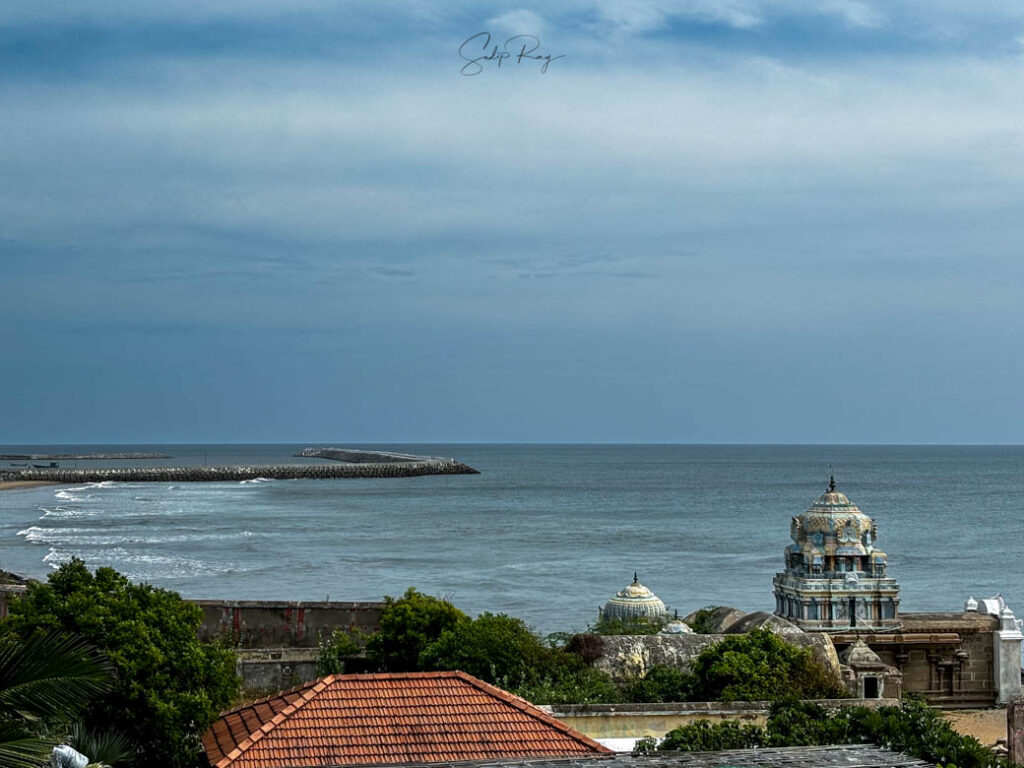
7. Is there any entry fee?
Tickets are only mandatory for entering the Dansborg Fort.
